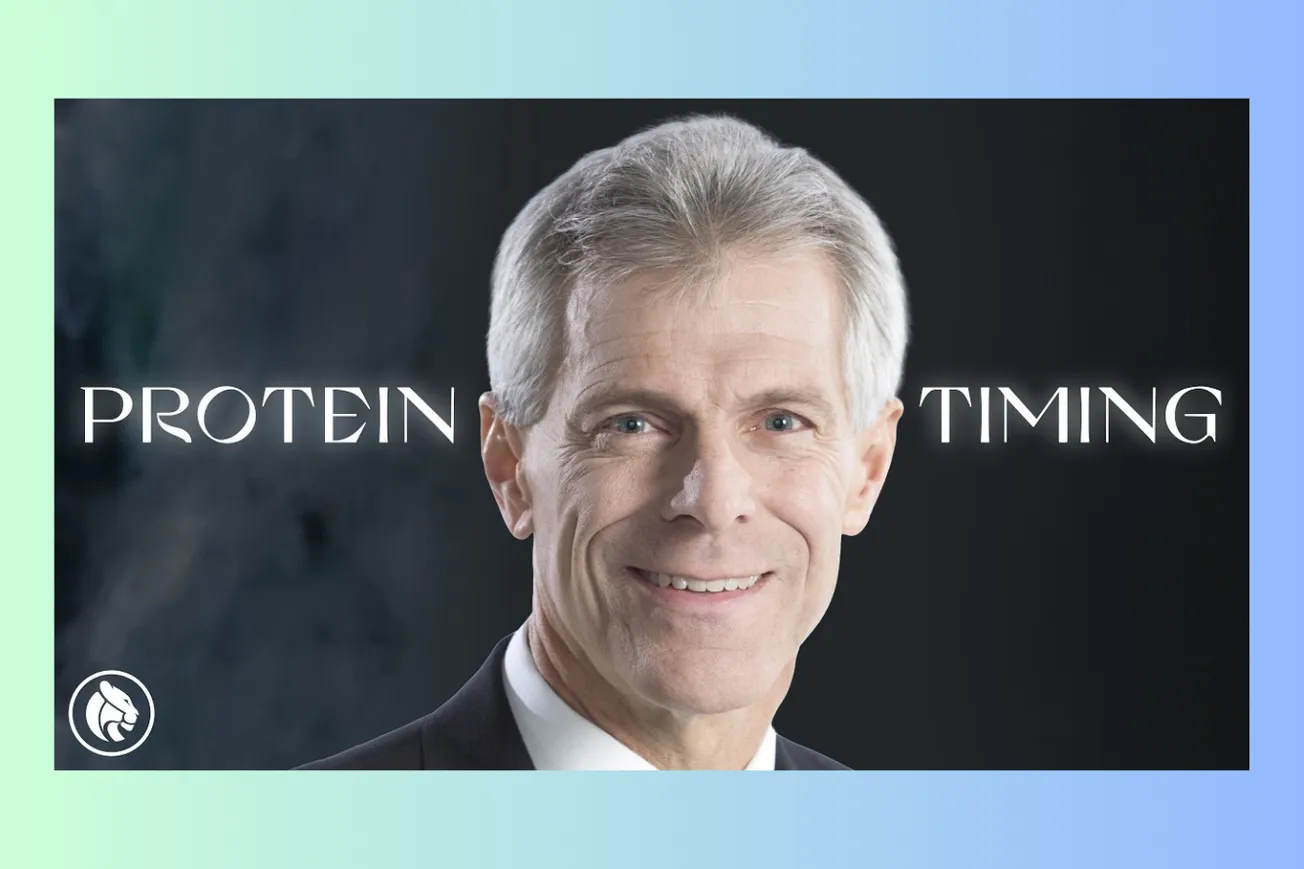Table of Contents
This post dives into the science behind building muscle, increasing strength, and optimizing recovery. Discover actionable, neuroscience-based protocols from the Huberman Lab Podcast to enhance your physical performance, understand muscle metabolism, and leverage the critical brain-muscle connection for better results and longevity.
Key Takeaways
- Muscle health is crucial not just for performance but for metabolism, posture, longevity, and even brain function.
- The nervous system, specifically motor neurons, controls all muscle contraction and adaptation, including hypertrophy (growth).
- Training intensity and volume are key variables, with different protocols optimizing for strength, size, or endurance.
- Lactate, often misunderstood, is a valuable fuel source and hormonal signal, not just a byproduct of fatigue.
- Recovery is paramount; measures like grip strength and CO2 tolerance can gauge nervous system readiness.
- Proper nutrition, particularly sufficient leucine intake, is essential for muscle protein synthesis and repair.
- Certain supplements like creatine and beta-alanine have strong scientific backing for enhancing performance.
- Cold exposure immediately post-workout might hinder strength/hypertrophy gains by reducing necessary inflammation.
- Training consistency allows the nervous system to anticipate effort, which can boost cognitive focus even on rest days.
Timeline Overview
- 00:00 - 15:00 — Introduction to muscle's importance beyond athletics (metabolism, longevity, posture). Overview of the neuromuscular system: upper/lower motor neurons, central pattern generators (CPGs), and acetylcholine's role in muscle contraction. Explanation of antagonistic muscle pairs (flexors/extensors) and reciprocal inhibition.
- 15:00 - 30:00 — Muscle metabolism basics: glycolysis (glucose to pyruvate), ATP production with oxygen (mitochondria), and ATP production without oxygen leading to lactate. Debunking myths about lactate: it buffers acidity, acts as fuel, and is a hormonal signal beneficial for the heart, liver, and brain. Recommendation to train intensely enough to produce lactate ~10% of the time for systemic benefits.
- 30:00 - 45:00 — Principles of stimulating muscle change: stress, tension, and damage. Introduction to actin and myosin filaments; hypertrophy involves thickening myosin. Henneman's size principle: motor units are recruited from low to high threshold. Clarification that heavy weights aren't the only way to recruit high-threshold units; load range of 30-80% 1RM is effective. Distinction between training for strength (moving load, distributing effort) vs. hypertrophy (isolating muscle, intense localized contractions).
- 45:00 - 1:00:00 — Assessing the mind-muscle connection: ability to voluntarily contract specific muscles predicts potential for change. The better the connection, potentially fewer sets needed for stimulus. Volume recommendations: ~5 sets/week/muscle group for maintenance, ~10-15 sets/week for growth (untrained), potentially up to 25-30 (trained), dependent on recovery and contraction quality. Training to failure vs. near failure: most sets should be near failure, with ~10% potentially to failure. Importance of full range of motion.
- 1:00:00 - 1:15:00 — Training for speed/explosiveness: emphasizes moving moderate-to-heavy loads quickly, focusing on neural adaptation. Training for strength: involves slower speeds as fatigue sets in, recruiting high-threshold units. Training for hypertrophy: focuses on muscle isolation, potentially using techniques like flexing between sets (aids hypertrophy, hinders immediate performance) and pre-exhaustion (e.g., leg extensions before squats).
- 1:15:00 - 1:30:00 — Protocol for specifically increasing testosterone via resistance training (Duncan French's work): 6 sets of 10 reps (6x10) with compound movements, ~120s rest, potentially twice/week maximum. Contrast with 10x10, which doesn't show the same testosterone boost. Importance of recovery assessment: systemic vs. local muscle recovery. Tools: Heart Rate Variability (HRV), grip strength (objective measures like scale squeeze), and Carbon Dioxide (CO2) tolerance test.
- 1:30:00 - 1:45:00 — Detailed explanation of the CO2 tolerance test as a measure of nervous system readiness/recovery: 4 deep breaths (in nose, out mouth), 5th deep inhale, then exhale as slowly as possible through mouth, timing the exhale. <25s = potentially under-recovered; 30-60s = good; >65s = well-recovered. Importance of tracking changes over time. Using deliberate parasympathetic activation (e.g., physiological sighs, NSDR) immediately post-workout for 5 mins to kickstart recovery.
- 1:45:00 - End — Factors interfering with recovery/adaptation: Cold exposure (ice baths, cold showers) within 4 hours post-training may blunt strength/hypertrophy gains. Anti-histamines and NSAIDs can interfere with necessary inflammatory signals. Foundational recovery support: adequate Omega-3s (>1000mg EPA/day), Vitamin D, Magnesium Malate (esp. for soreness). Creatine (3-5g/day typical, adjust for weight) strongly supported for power, fatigue reduction, hydration. Beta-alanine (2-5g) for performance in 60-240s range. Arginine/Citrulline for endurance via vasodilation (potential cold sore caution). Importance of sufficient Leucine (700-3000mg/meal) for muscle protein synthesis, ideally from high-quality whole foods. Cognitive effects: post-exercise brain oxygen dip; leveraging training timing consistency to boost cognitive focus on rest days.
The Brain-Muscle Connection: Your Control Center
Understanding how your nervous system controls your muscles is fundamental to optimizing training. It's not just about the muscles themselves; it's about the signals they receive.
- Neural Command Chain: Movement starts in the brain with upper motor neurons (for deliberate actions) located in the motor cortex. These signals travel down the spinal cord to lower motor neurons.
- The Final Messenger: Lower motor neurons release the neurotransmitter acetylcholine onto muscle fibers. This chemical message is the only way muscles are instructed to contract. Think of it as the final "go" signal.
- Rhythmic Automation: For repetitive, automatic movements like walking or cycling, central pattern generators (CPGs) in the spinal cord take over, driving the lower motor neurons rhythmically without conscious thought. Deliberate override is always possible via the upper motor neurons.
- Reciprocal Inhibition: Most limb movements involve pairs of opposing muscles (e.g., biceps/triceps, quads/hamstrings). When one muscle (the agonist) is activated by a nerve signal, the opposing muscle (the antagonist) is automatically inhibited to allow smooth movement. This is a built-in efficiency mechanism.
- Strength vs. Hypertrophy Control: Training for raw strength often involves recruiting multiple muscle groups efficiently to move a load (distributing the neural drive). Training specifically for hypertrophy (muscle growth) requires focusing the neural drive intensely onto a specific muscle or group, often through isolation exercises, forcing targeted adaptation. "It's the nerve to muscle connection that actually creates hypertrophy."
Fueling the Machine: Muscle Metabolism & Lactate
Muscles are metabolically active tissues requiring significant energy. How they generate and use this energy dictates their performance capacity.
- Primary Fuel: Muscles primarily run on glucose (sugar), stored as glycogen. The initial breakdown (glycolysis) splits glucose into pyruvate, yielding a small amount of ATP (energy currency).
- Aerobic Powerhouse: If sufficient oxygen is available, pyruvate enters the mitochondria (the cell's power plants). Here, through complex processes (like the citric acid cycle and electron transport chain), it's broken down completely, generating a large amount of ATP (28-30 units) – efficient, sustainable energy.
- Anaerobic Burst & "The Burn": During intense effort when oxygen supply can't keep up with demand, pyruvate is converted to lactate. This occurs without oxygen (anaerobically). The "burn" felt isn't lactic acid (humans make lactate), but acidity building up.
- Lactate Reconsidered: Contrary to old beliefs, lactate is beneficial:
- It acts as a buffer, reducing the acidity (the burn) that would otherwise shut down muscle function.
- It serves as a secondary fuel source, allowing muscles to continue working anaerobically for a short time.
- It functions as a hormonal signal, traveling through the blood to benefit the heart, liver, and potentially brain health (enhancing astrocyte function), especially when produced during intense (~10% of workout time) exercise bouts where you "feel the burn." Proper breathing during this phase is crucial to utilize lactate effectively.
Stimulating Change: Principles of Muscle Adaptation
Muscles don't grow or get stronger without a reason. Specific stimuli trigger the adaptation process.
- The Triad of Stimuli: Muscle adaptation leading to increased strength or size is primarily driven by three factors experienced during training:
- Mechanical Tension: Force generated by the muscle, especially when lifting resistance or contracting against a load. This is often considered the most critical factor for hypertrophy.
- Muscle Damage: Micro-tears in muscle fibers caused by novel or strenuous exercise (often associated with soreness). This triggers repair and rebuilding processes.
- Metabolic Stress: Buildup of metabolic byproducts (like lactate and hydrogen ions, leading to "the burn") during intense exercise, particularly sets taken close to failure with shorter rest periods.
- Hypertrophy Mechanism: Muscle growth (hypertrophy) primarily involves the thickening of myosin protein filaments within muscle fibers. Think of tiny balloons (myosin heads) within the muscle getting bigger in response to appropriate stimuli.
- Henneman's Size Principle: Your nervous system recruits motor units (nerve + the muscle fibers it controls) economically. It starts with small, low-threshold units for light tasks and progressively recruits larger, high-threshold units as the demand (load or fatigue) increases. Reaching these high-threshold units is crucial for stimulating significant strength and hypertrophy gains.
- Load vs. Effort: You don't need extremely heavy weights (e.g., >80% 1RM) to recruit high-threshold motor units. Training with moderate loads (even 30-50% 1RM) taken close to muscular failure also forces their recruitment as fatigue sets in on the lower-threshold units. The effort level, bringing sets near failure, is key across a wide range of loads (30-80% 1RM).
Training Protocols: Tailoring to Your Goals
Different training approaches target different outcomes – strength, hypertrophy (size), or power/speed.
- Volume is Key: Total weekly training volume (sets per muscle group) is a major driver of results.
- Maintenance: ~5 challenging sets per muscle group per week are needed just to maintain current strength/size.
- Growth (Untrained): Beginners/intermediates often see good results with 10-15 sets per week.
- Growth (Trained): More advanced individuals might need higher volumes (up to 20-25+, but highly individual) and benefit more from strategic variation.
- Load Range: Most strength and hypertrophy gains occur using loads between 30% and 80% of your one-repetition maximum (1RM).
- Strength Focus: Bias towards heavier loads (e.g., 75-85%+ 1RM) for fewer reps.
- Hypertrophy Focus: Effective across the 30-80% range, as long as sets are taken close to failure. Lighter loads require higher reps to reach adequate stimulus.
- Training to Failure: Crucial for maximizing motor unit recruitment, especially with lighter/moderate loads. However, consistently training to absolute failure can excessively tax the nervous system and hinder recovery. A common recommendation is taking most sets 1-3 reps shy of failure, with only a small percentage (~10%) of sets potentially taken to true momentary failure.
- Mind-Muscle Connection: Deliberately focusing on contracting a specific muscle is vital for hypertrophy (isolating the muscle). For strength or performance in compound movements (squats, chin-ups), distributing the effort across multiple muscles efficiently is better; intense isolation can hinder performance in these cases. Techniques like flexing the target muscle between sets or pre-exhausting it with an isolation exercise before a compound move can enhance the hypertrophy stimulus but will likely reduce performance on the compound lift itself.
- Speed/Power Training: To get faster or more explosive, focus on moving moderate-to-heavy weights (e.g., 60-75% 1RM) as quickly and safely as possible. Avoid the slow, grinding reps characteristic of near-failure training, as the emphasis is on neural adaptation for speed.
- Testosterone Protocol: Specific protocol (e.g., 6 sets of 10 reps with compound lifts, ~120s rest) can maximize acute testosterone release, but exceeding this volume (e.g., 10x10) may negate the hormonal benefit.
Recovery: The Unsung Hero of Gains
Adaptations happen between workouts, not during them. Optimizing recovery is crucial for progress and preventing overtraining.
- Gauging Systemic Recovery: Your nervous system's readiness impacts all training. Tools to assess this include:
- Heart Rate Variability (HRV): Higher variability generally indicates better recovery and readiness. Requires specific devices for accurate measurement.
- Grip Strength: A simple proxy for overall neuromuscular function. Measure consistently (e.g., first thing in the morning using a dynamometer or floor scale) and track changes. A significant drop (e.g., >10-15%) suggests under-recovery.
- CO2 Tolerance Test: Measures breath-hold time after a specific breathing pattern (4 deep breaths, 5th deep inhale, then slowest possible exhale). Timed exhale duration: <25s (potential under-recovery), 30-60s (ready), >65s (well-recovered). Track your baseline and daily deviations.
- Immediate Post-Workout Recovery: Actively shifting towards a parasympathetic (rest-and-digest) state immediately after training can kickstart recovery. Spend 5 minutes doing calming activities like:
- Physiological sighs (double inhale through nose, long exhale through mouth).
- Non-Sleep Deep Rest (NSDR) protocols or brief meditation.
- Factors Hindering Recovery/Adaptation:
- Cold Exposure: Getting into ice baths or very cold showers within ~4 hours after strength/hypertrophy training may blunt the adaptive inflammatory signals needed for gains. Timing matters.
- NSAIDs & Anti-histamines: These can interfere with the necessary inflammatory and signaling processes triggered by exercise. Use cautiously around training times if adaptation is the primary goal.
- Foundational Support: Consistent habits are key: sufficient sleep, managing stress, and proper nutrition (including adequate protein/leucine). Foundational supplements like Omega-3s (especially EPA), Vitamin D, and potentially Magnesium Malate can help manage baseline inflammation and support recovery.
Supplements & Nutrition for Neuromuscular Function
While training and recovery form the core, certain nutritional strategies and supplements have strong evidence for supporting muscle function and performance.
- Electrolytes (Salt, Potassium, Magnesium): Absolutely fundamental. Nerve cells fire using electrical signals generated by ion movement (especially sodium/salt). Insufficient electrolytes impair nerve function, muscle contraction, and cognitive ability. Needs vary based on sweat, diet, hydration, etc.
- Creatine Monohydrate: One of the most researched and effective supplements. Increases muscle creatine stores, boosting ATP regeneration for high-intensity bursts. Improves power output (strength and speed), reduces fatigue, aids hydration, and may have cognitive benefits. Typical dose: 3-5g/day (adjust based on body weight, e.g., 5g for ~180lbs, more if heavier, less if lighter). No loading phase needed. Note: Can increase DHT, potentially impacting hair loss/growth in susceptible individuals.
- Beta-Alanine: Buffers acidity within muscles, primarily benefiting performance in activities lasting 60-240 seconds (e.g., high-rep weight sets, interval sprints, rowing). Improves muscular endurance and reduces fatigue in this range. Standard dose: 2-5g daily.
- Leucine (Essential Amino Acid): A key trigger for Muscle Protein Synthesis (MPS). Consuming 700-3000mg of leucine per meal (every ~3-5 hours) appears optimal for stimulating muscle repair and growth pathways. Best obtained from high-quality whole food protein sources (animal sources are denser per calorie, but vegan/vegetarian diets can achieve this with careful planning or supplementation).
- Arginine/Citrulline (Beetroot Juice): Can improve blood flow (vasodilation), potentially benefiting longer endurance activities. Primarily act via nitric oxide pathways. Caution: Can trigger cold sore (HSV-1) outbreaks in susceptible individuals due to arginine's role in viral replication.
Bottom Line
Optimizing muscle growth and strength involves strategically manipulating training variables like volume, intensity, load, and rest, guided by your specific goals and recovery capacity. Understanding the underlying neuromuscular and metabolic processes, particularly the role of lactate and the importance of recovery metrics like CO2 tolerance, empowers you to train smarter for enhanced performance and long-term health.









